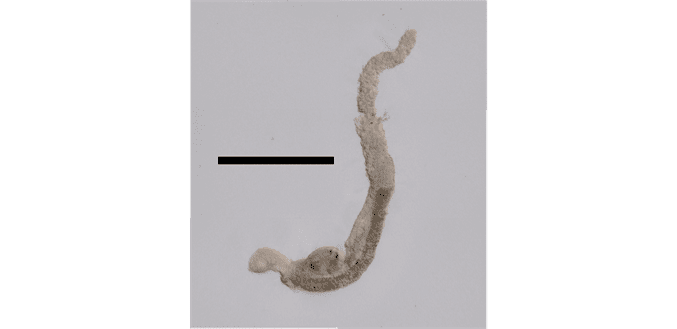The colony of Bargmania elongata takes on an elongated form, featuring a siphosomal stem, two growth zones, numerous identical nectophores, and a gas-filled pneumatophore. In younger nectophores, they are almost cylindrical from the apex to the nectosac and ostium, while the older ones have a bulging mid-region. A muscular lamella extends along the entire length of a triangular extension on the ventral side. The dorso and ventro lateral ridges are connected by a single, highly oblique lateral ridge, which extends from the proximal end of the nectosac to the ostium. The dorsal and ventral radial canals are straightforward and uncomplicated, whereas the lateral radial canal exhibits a slight sigmoid curve at the lateral sides of the nectosac.The siphosome is orange in color and has a thickness of 3.0 mm, with remnants of a continuous series of muscular lamellae of bracts. It’s worth noting that Bargmania elongata is a dioecious species, meaning it has separate male and female individuals.
